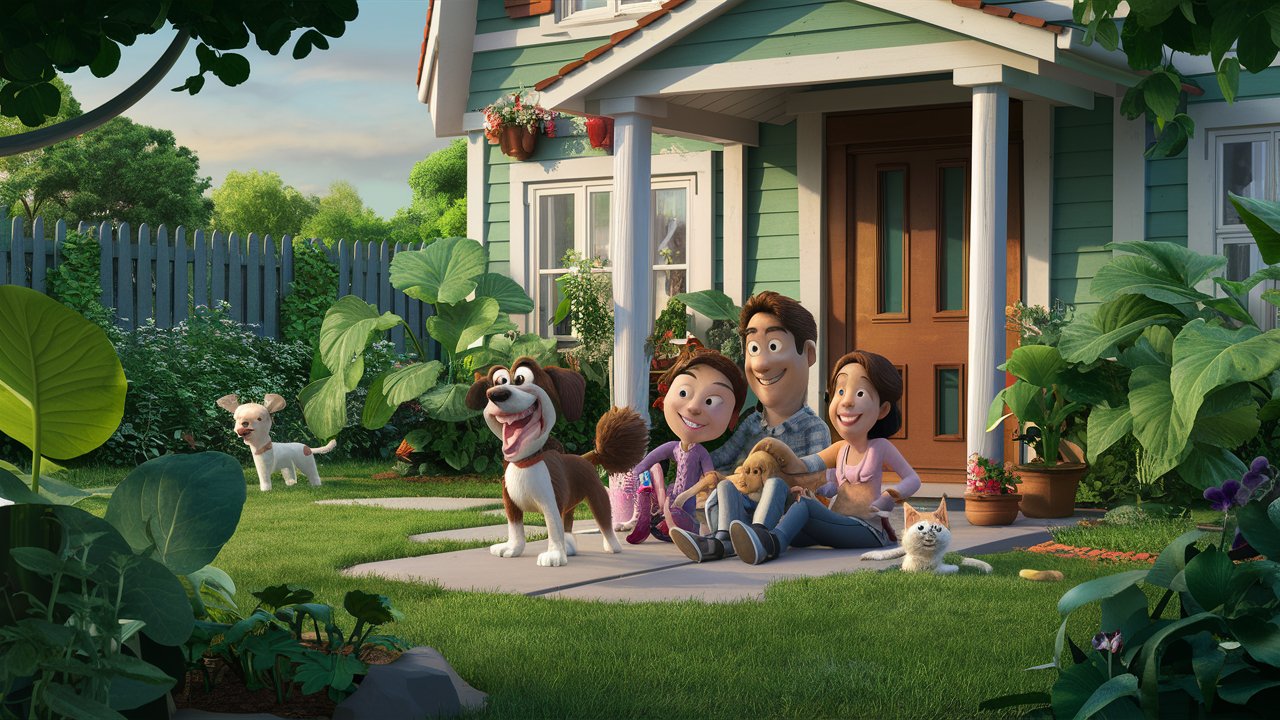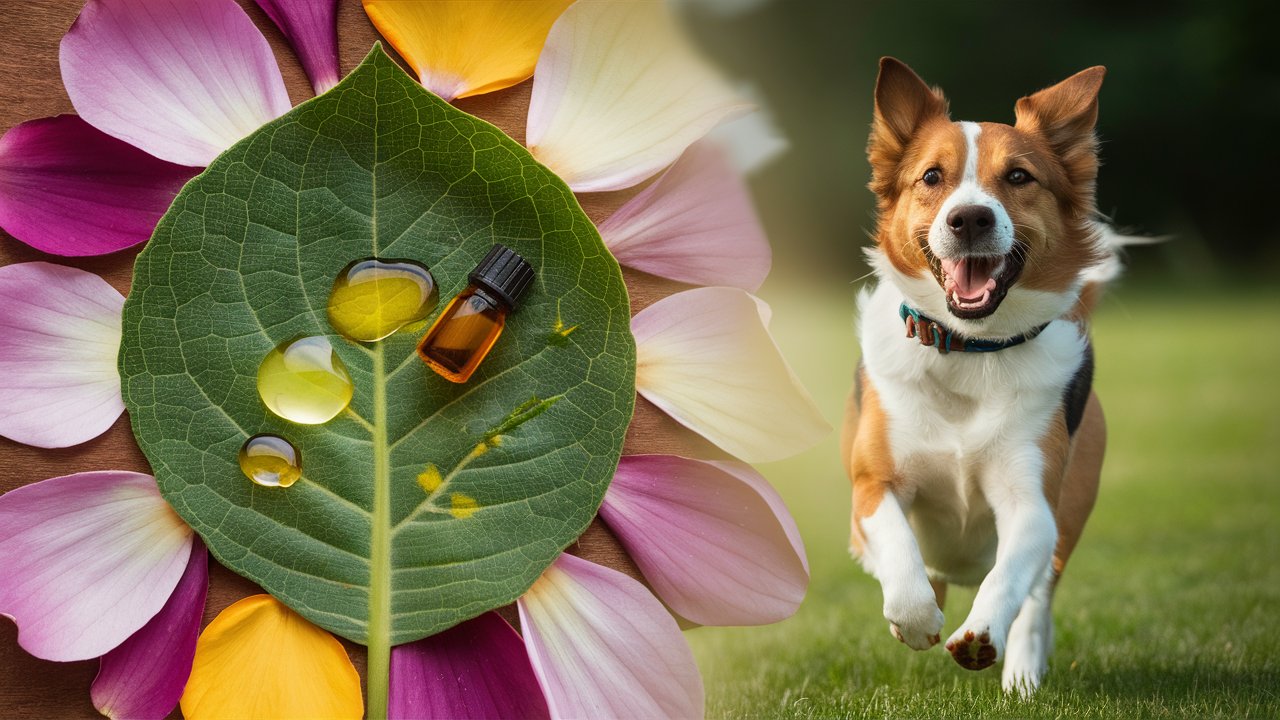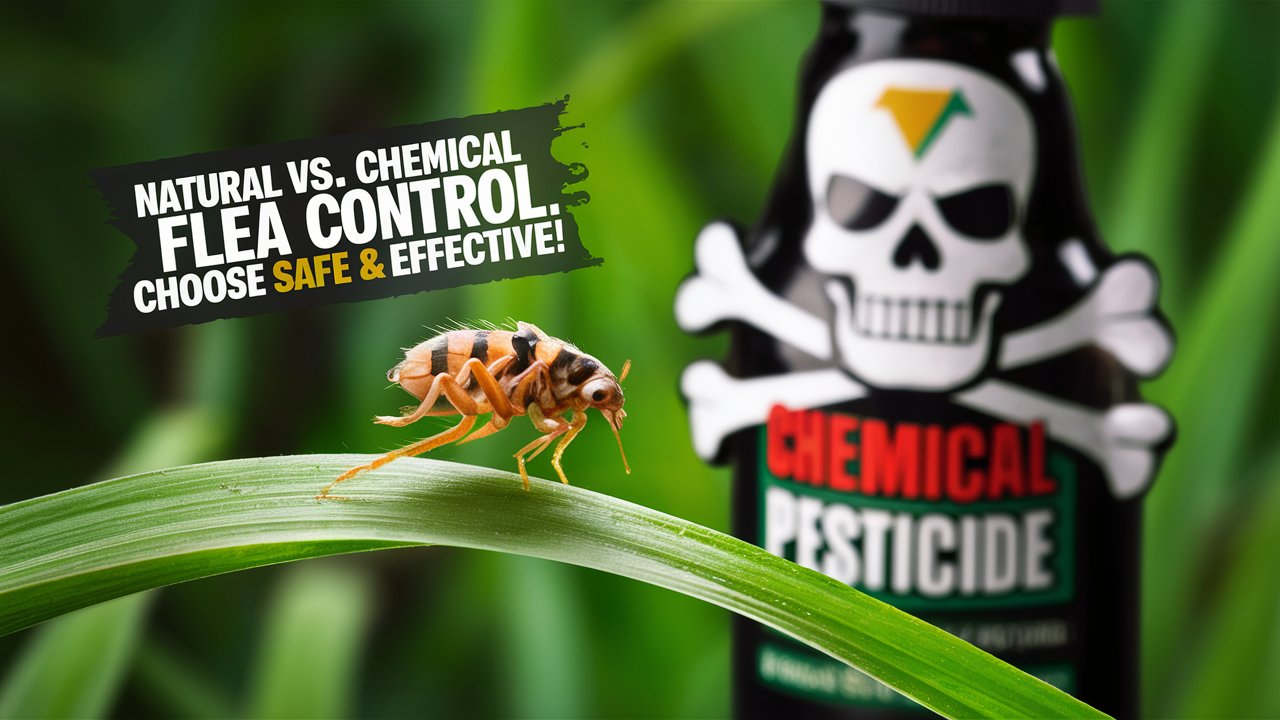Conquering the Critters: A Comprehensive Guide to Using Flea-Repellent Plants to Safeguard Your Yard
Fleas – the bane of pet owners and yard enthusiasts everywhere. These minuscule, jumping menaces can wreak havoc, causing itchy bites on pets and humans alike. They spread discomfort throughout your home and can even transmit diseases. Traditional chemical flea repellents offer a solution, but often come with a hefty price tag. Harsh ingredients can pose health risks to your beloved pets, children, and the environment.
Thankfully, Mother Nature provides a gentler, more sustainable alternative: flea-repellent plants! These botanical warriors not only repel fleas with their fragrant properties but also enhance your yard’s aesthetic appeal. Let’s delve deeper into the world of flea-repellent plants, exploring how they work, the best options for your yard, and how to create a haven that discourages these pesky parasites.
Understanding the Allure of Your Yard to Fleas: A Strategic Approach to Disruption
To effectively combat fleas, it’s crucial to understand what attracts them to your yard in the first place. Here’s a breakdown of the key factors:
-
The Allure of Animal Companions: Fleas are bloodsucking parasites that thrive on animal hosts like dogs, cats, and even occasional wildlife visitors. Yards frequented by pets become prime targets for flea infestations.
Sponsored ⓘSponsored ⓘ -
A haven of Moisture: Fleas favor damp environments. Areas with overgrown grass, inadequate drainage, or shady spots create the perfect breeding ground for these tiny terrors.
-
Organic Riches: Yards overflowing with fallen leaves, debris, and other organic matter provide ideal shelter and breeding grounds for fleas. These materials offer a haven for flea eggs and larvae to develop.
Flea-repellent plants disrupt these attractive elements for fleas. Many of these botanical heroes release potent essential oils with strong scents that repel fleas. Additionally, some plants boast physical deterrents, such as hairy leaves, that make it difficult for fleas to maneuver and establish themselves.
A Green Arsenal: Unveiling the Top 10 Flea-Repellent Plants for Your Yard

Now that you understand the science behind flea-repellent plants, let’s explore a powerful arsenal of ten botanical warriors to fortify your yard:
-
Lavender (Lavandula angustifolia): This quintessential flowering herb is a champion in the fight against fleas. Beyond its calming fragrance for humans, lavender boasts a potent scent that fleas find highly unpleasant. This sun-loving plant thrives in well-drained soil, adding a touch of elegance and a shield against fleas to your yard.
-
Rosemary (Rosmarinus officinalis): Another fragrant hero, rosemary offers a double whammy – it repels fleas with its pungent aroma and serves as a culinary delight for human taste buds. Rosemary is a versatile plant that flourishes in sunny locations and can be incorporated into your landscaping or used fresh in your cooking.
-
Catnip (Nepeta cataria): While catnip is renowned for its intoxicating effect on felines, it has the opposite effect on fleas. The strong scent of catnip effectively repels adult fleas and may even kill flea larvae. Catnip is a fast-growing plant, so consider planting it in containers to manage its spread.
-
Mint (Mentha spp.): Varieties like peppermint and spearmint come armed with a powerful, minty aroma that deters fleas. Mint is a fast-growing and easily maintained plant, but due to its spreading nature, it’s best planted in pots or containers to prevent it from taking over your garden.
-
Citronella Grass (Cymbopogon nardus): This tall grass is a familiar ingredient in many commercial flea repellents, and for good reason. Citronella grass releases a lemony scent that fleas find offensive. This fast-growing plant thrives in warm climates and requires plenty of sunshine.
-
Lemongrass (Cymbopogon citratus): Similar to citronella grass, lemongrass boasts a citrusy fragrance that repels fleas. Lemongrass is another versatile plant that offers a culinary advantage – its zesty flavor can be incorporated into various dishes. Lemongrass prefers warm climates with well-drained soil.
-
Marigolds (Tagetes spp.): These cheerful flowers not only brighten your yard but also boast strong-smelling properties that repel fleas and other unwanted pests. Marigolds are easy to grow from seed, come in a variety of vibrant colors, and require minimal maintenance, making them a perfect choice for busy homeowners.
-
Chrysanthemums (Chrysanthemum spp.): These beautiful fall flowers add a touch of color and act as natural flea repellents. Chrysanthemums are low-maintenance plants that come in a wide range of colors and sizes, allowing you to create a visually stunning display while deterring pesky fleas.
-
Sage (Salvia officinalis): This fragrant herb offers a multitude of uses, including flea repulsion. Sage is a low-growing perennial that prefers full sun and well-drained soil. Its silvery-green leaves and purple flowers add a touch of charm to your yard, while its strong scent discourages fleas from setting up camp.
-
Diatomaceous Earth (Not a Plant, But Natural): While technically not a plant, diatomaceous earth deserves a mention in this arsenal. This naturally occurring, fossilized powder made from the remains of tiny aquatic organisms is a powerful weapon against fleas. Diatomaceous earth works by dehydrating fleas and other insects with its microscopic, abrasive particles. However, it’s crucial to use food-grade diatomaceous earth and apply it with caution to avoid inhalation by humans or pets.
Ready to create your natural flea-repellent haven? Check out our recommended gardening tools and supplies to get started
Strategic Deployment: Creating a Green Haven Repellent to Fleas
Planting flea-repellent plants isn’t a haphazard endeavor. To maximize their effectiveness and create a formidable barrier against fleas, consider these strategic deployment tips:
-
Diversity is Key: Don’t rely on just one type of plant. Plant a variety of flea-repellent plants throughout your yard. This creates a more potent defensive zone with a diverse range of scents that fleas find overwhelming.
-
Location, Location, Location: Strategic placement is vital. Plant flea-repellent herbs and flowers around the perimeter of your yard, near entryways like doors and patios, and in shady areas where fleas tend to congregate. This creates a barrier zone that discourages fleas from entering your yard in the first place.
-
The Art of Companion Planting: Companion planting is a technique where you strategically plant beneficial species together. Consider incorporating flea-repellent herbs alongside your vegetable or flower gardens. This not only deters fleas from your prized plants but also promotes overall garden health through improved pest control.
-
Plant Power with Proper Care: Even the most potent plants need proper care to thrive and exert their full flea-repellent potential. Ensure your flea-repellent plants receive adequate sunlight, water, and drainage according to their specific needs. Healthy plants are more effective at repelling fleas, so a little TLC goes a long way.
5,000+ People Saw Related Offers
- Pamper your pet! Discover natural flea & tick control, organic food, and more.
- Healthy pets start here! Shop organic food, natural supplements, & eco-friendly toys.
- Give your pet the best! Explore our range of natural products & accessories.
- Protect your furry friend! Find effective flea & tick control solutions now.
- Nourish your pet naturally! Discover delicious organic food options.
- Boost your pet’s health! Try our natural supplements for optimal wellness.
- Happy pets, happy you! Shop eco-friendly toys & accessories today.
Sponsored Contents ⓘ | Advertise Now
Living in Harmony with Your Green Defenders: A Sustainable Approach to Flea Control
While flea-repellent plants are a fantastic natural solution, it’s important to manage expectations. These botanical warriors may not eradicate a full-blown flea infestation on their own. Here’s a multi-pronged approach to create a truly flea-free haven:
-
Maintaining a Tidy Yard: Regularly mow and trim your lawn. Fleas thrive in tall grass and overgrown areas. Keeping your yard neat and tidy eliminates hiding spots and breeding grounds for these pests.
-
Addressing Existing Infestations: If you’re already battling a flea infestation, consider natural flea treatments for your pets alongside using flea-repellent plants. Talk to your veterinarian for safe and effective options. Diatomaceous earth can also be used indoors, following safety guidelines, to target existing flea populations.
-
Regular Vacuuming: Vacuum your carpets, rugs, and upholstery regularly. This helps remove flea eggs, larvae, and adult fleas from your home. Ensure you dispose of the vacuum cleaner bag properly after use to prevent flea reintroduction.
-
Washing Pet Bedding: Wash your pet’s bedding in hot water (at least 140°F) every week to kill flea eggs and larvae. Regular baths for your pets using a veterinarian-recommended flea shampoo can also help control existing infestations.
The Final Bloom: A Sustainable Solution for a Flea-Free Yard
Flea-repellent plants offer a safe, sustainable, and aesthetically pleasing solution for deterring fleas from your yard. By understanding the factors that attract fleas, strategically planting a diverse range of these botanical warriors, and implementing complementary flea control measures, you can create a haven for your pets, family, and yourself – free from the itchy torment of fleas. Remember, a healthy yard starts with healthy plants, so provide proper care to your green guardians to maximize their effectiveness. Embrace the power of nature and reclaim your yard as a peaceful paradise, flea-free!
Beyond the Bloom: Additional Tips and Considerations
- Climate Considerations: When choosing flea-repellent plants, consider your local climate. Some plants thrive in warm weather, while others prefer cooler temperatures. Opt for plants that are well-suited to your growing zone to ensure their optimal growth and effectiveness in repelling fleas.
-
Plant Allergies: If you or your family members have allergies to specific plants, be sure to research and avoid those varieties. Many flea-repellent plants offer similar benefits, so you can find effective alternatives that won’t trigger allergic reactions.
-
Attracting Beneficial Insects: While deterring fleas is a priority, it’s also beneficial to attract helpful insects to your yard. Ladybugs, praying mantises, and certain types of spiders are natural predators of fleas and other pests. Consider incorporating flowering plants that attract these beneficial insects to create a balanced ecosystem in your yard.
-
Consulting a Local Nursery: Local nurseries are a valuable resource for information and guidance. Consult with your local gardening experts to discuss flea-repellent plant options that are well-suited to your specific climate, soil conditions, and desired aesthetic.
-
The Power of DIY Sprays: In addition to planting flea-repellent varieties, you can create your own natural flea repellent spray using essential oils derived from some of these plants. However, caution is essential. Certain essential oils can be toxic to pets, so always conduct thorough research and dilute them properly before using them around animals. Consult with a veterinarian before applying any homemade sprays to your pets.
-
Aesthetics and Functionality: Don’t compromise on beauty! Many flea-repellent plants boast stunning flowers and foliage, allowing you to create a visually captivating yard while deterring pesky fleas. Explore different varieties and consider incorporating them into your existing landscaping design.
The Final Chapter: A Long-Term Strategy for a Flea-Free Paradise
Flea control is an ongoing process. By implementing a multi-faceted approach that combines the power of flea-repellent plants, proper yard maintenance, and strategic pet care, you can significantly reduce the flea population in your yard and create a long-lasting haven for your family and pets. Remember, consistency is key! Regularly maintain your yard, address any potential flea infestations promptly, and enjoy the peace of mind that comes with a flea-free environment.
Embrace the Natural Solution and Bask in a Flea-Free Paradise!
Flea-repellent plants offer a natural, pet-safe, and eco-friendly alternative to chemical flea repellents. By incorporating these botanical warriors into your yard, you not only deter fleas but also enhance the beauty and biodiversity of your outdoor space. So, embrace the power of nature, plant a diverse selection of flea-repellent plants, and create a haven for your loved ones, free from the itchy nuisances of fleas. With a little planning, effort, and the power of these botanical allies, you can reclaim your yard as a peaceful paradise and enjoy the company of your furry friends without the worry of flea infestations.
Want to learn more about natural flea control for your pets? Explore our informative and comprehensive guides and find the perfect solution for your furry friend!
5,000+ People Saw Related Offers
- Pamper your pet! Discover natural flea & tick control, organic food, and more.
- Healthy pets start here! Shop organic food, natural supplements, & eco-friendly toys.
- Give your pet the best! Explore our range of natural products & accessories.
- Protect your furry friend! Find effective flea & tick control solutions now.
- Nourish your pet naturally! Discover delicious organic food options.
- Boost your pet’s health! Try our natural supplements for optimal wellness.
- Happy pets, happy you! Shop eco-friendly toys & accessories today.











This blog post is a game-changer! Fleas have been a constant battle in my house, especially with my two cats, Luna and Leo. I was hesitant to use harsh chemicals, so I decided to try planting some citronella around my patio door, as suggested in the article. It’s been a few weeks now, and I haven’t seen a single flea since! The plants look lovely too, and they add a nice citrusy scent to the air. This is a natural solution I can definitely get behind.
This is such a cool concept! I never knew there were plants that could repel fleas. The blog post is well-written and easy to follow, with clear information on different flea-repellent plants and how to care for them. I’m definitely going to add some lavender and rosemary to my balcony garden. Natural solutions are always a plus, and these plants sound like a bonus for their beauty and fragrance!